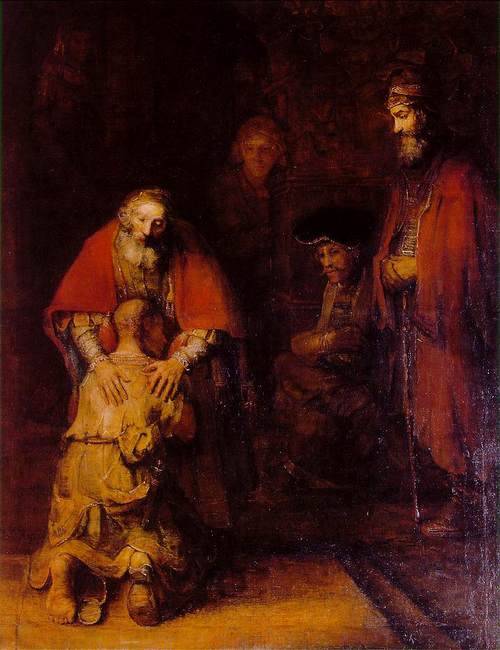The Painting
A few weeks ago I was asked the question, “What is your favorite work of art?” I responded immediately by telling the inquisitive person, “Return of the Prodigal Son” by Rembrandt. Actually, it was an easy question. For years now this painting which was skillfully created in 1668, has been the most essential piece of art which fills my soul. In fact, this specific painting is on my bucket list, and I hope to some day see it in person at the Hermitage Museum in St. Petersburg, Russia.
Harmensz van Rijn Rembrandt’s Return of the Prodigal Son is a depiction of the biblical parable of the prodigal son found in Luke 22:54-57. The first time I laid eyes on it I was captured. From the amazing artistry to the story which was unfolding among the brushwork, I was inspired. In that first meeting I was drawn by two elements. First, the spontaneous forgiveness of the father and second, the seeming lack of approval by the older brother. However, there was a third element. A friend of mine while standing behind me politely prompted me to look at the father’s hands on the son. Once I noticed them, I was forever changed.

This past week while reading Theology A Very Short Introduction by David F. Ford, I was struck by the concept of “Human Subjectivity” within our understandings of knowing God. Ford mentions within these understandings our “practices of self” which we have experienced throughout our upbringing, and make up a large amount of the context in which we use to interpret belief, hope, forgiveness, theology and God. Soon after reading these concepts by Ford, three themes began to emerge in regards to interpretations of those involved in Rembrandt’s great work.
Three Interpreters
The Father… Only a father can imagine what it is like to lose a son! It is hard for me to even conceive of Elias my son walking away or being lost. The father with great compassion and arms wide open spontaneously forgives. The debt is forgiving. There are no terms or conditions, he simply forgives. There is joy, happiness and most of all forgiveness. A father who poured all of his heart and soul into his son for a good portion of life finally has a glimpse of hope. What was lost is now found.
The Son… Off in the background a shadowy figure watches the entire transaction happening between the father and the prodigal son. Darkness, hurt, discontent seem to jump off the canvas. Seriously, what would it feel like to have done everything right and then watch your father bless the one who did everything wrong? If you’re anything like me, I’d like to believe that I would be good with the result, but I’m not quite sure. This distant figure which Christian Tumpel identifies as the older brother seems upset that the brother ever came home. A brother is not as invested as a father!
The Painter… Rembrandt himself was creating from a specific context. His critics often point to Rembrandt’s debt to a woodcut by the name of Maerton van Heemskerck and his close relationship to the theological disputes between Protestants and Catholics who were involved with the direct interpretation of this specific parable. As Ford says,”No one is neutral.” Yet in the midst of this historical context in the 16th and 17th century one of the great artistic works on forgiveness is born. Having lasting impact until today.
Two Hands. Two Natures.
As my eyes turned towards the hands of the father resting on the sons shoulders, I quickly noticed that the one hand was that of a man and the second was that of a women. With great thought and intent Rembrandt was depicting the actions of the father in two natures. The strength of a man simultaneously with the care and compassion of a woman. The result being a Prodigal Son who felt the very act of being forgiven from his father.
Leave a Reply
You must be logged in to post a comment.